Simulation Standard
Silvaco面向半导体工艺和器件仿真工程师推出的技术刊物
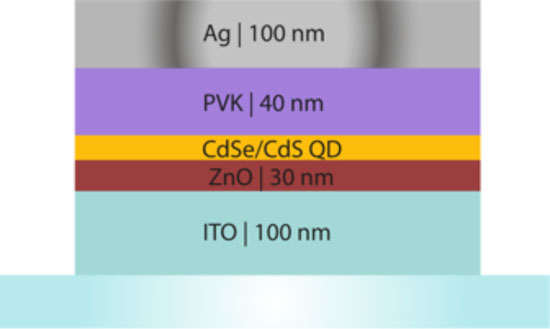
Quantum Dot-Based Hybrid Light Emitting Diode Modelling Using Radiant
Introduction
With the recently launched Radiant, a graphical user interface (GUI) for Atlas-based TCAD simulations, the entry barrier for inexperienced users has been lowered. In particular, the use of guided simulation tools, for both experienced and novice researchers, can speed up the development cycle. Light emitting diodes (LEDs) have caught the attention of the scientific community for many years, especially organic-based light emitting diodes (OLEDs) and the emerging quantum dot-based light emitting diodes (QD-LEDs).
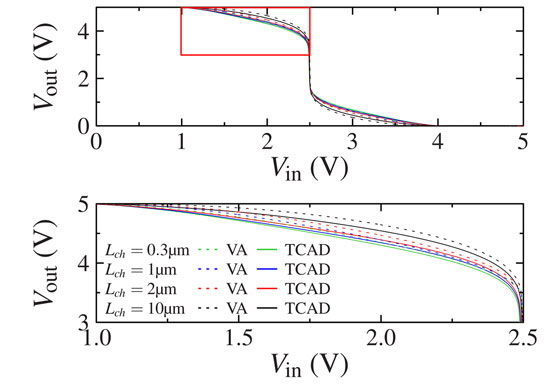
Verification of an Compact Model for Organic Thin-Film-Transistors by Using MixedMode Creating an CMOS Inverter Circuit with TCAD Transistor Devices
Organic thin-film transistors (OTFTs) are promising devices for future low-cost electronics[1][2]. However, to enable the development of this technology, circuit design simulation is needed. TCAD with MixedMode approach provides a suitable route for the physics based simulation of these transistors within simple circuits. As circuits become more complicated, more devices are needed and the computing time increases significantly. Compact models describe the behavior of the device with only a few equations and thus the computing time is reduced to a viable magnitude. Such equations are written down in a Verilog-A format which can be used by most SPICE simulators.
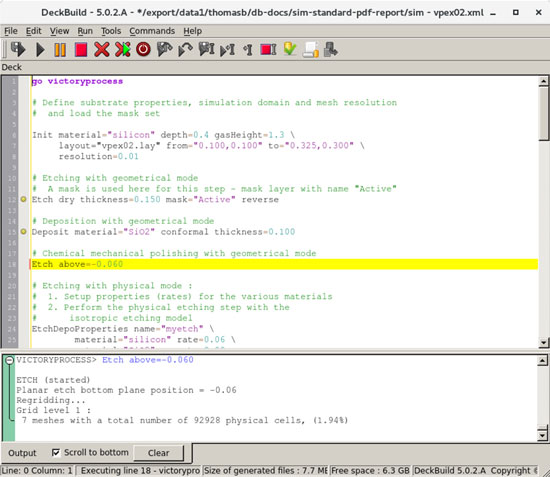
Hints, Tips and Solutions – Movie and PDF Report Generation with the DeckBuild GUI
Introduction
In this article we will emphasize two new features of the DeckBuild deck editing environment. These are the movie creation on the one hand and the creation of PDF reports on the other. The latest version of DeckBuild allows you to use recorded history points to prepare movies and PDF reports of a simulation flow. We will start by first illustrating the basic history creation and script execution mechanism, followed by pointing out the creation of movies. After that, we will demonstrate how to create a customized PDF report out of your simulation flow.

Process Variation, Alignment and BEOL Effects on Circuit Level Performance
As process nodes continue to shrink, the requirement for additional physics is gradually creeping into each stage of the design process. By way of illustration, TCAD simulations are becoming more atomistic in nature, SPICE models are becoming process-aware to take account of localized strain effects, and back or middle end of line (BEOL and MEOL) parasitics are moving from exclusively 2D rule based solutions to full 3D structure field solvers for numerous critical sections of the layout.
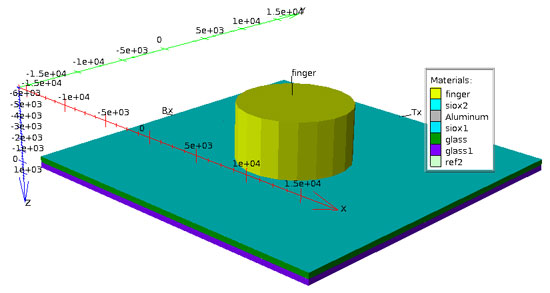
Touch Panel Capacitance Extraction in Hipex Full Chip Extraction Tool Using Stellar Field Solver
The previously standalone Stellar GUI based field solver tool for parasitic extraction is now integrated into Hipex (Silvaco’s full chip extraction tool) in Expert GUI. In Hipex, user can choose proper extraction method (including Steller solver) among different approaches. The GUI of Expert (Silvaco’s layout editor) has been extended to provide technology setup for Stellar mode of Hipex. Also, Expert provides full functional features of GDS drawing, editing and rule checking. As opposed to the Clever field solver based on adaptive meshing, Stellar can handle very large layout size with less memory and reduced runtime with acceptable accuracy (as compared to Clever). Clever, as very accurate adaptive meshing field solver, can be used as reference accuracy check when Stellar or rule based parasitic extraction method is performed in Hipex. In this article, we will review the basic interface of Hipex in Expert GUI using Stellar as a field solver to extract capacitance in touch panel example.
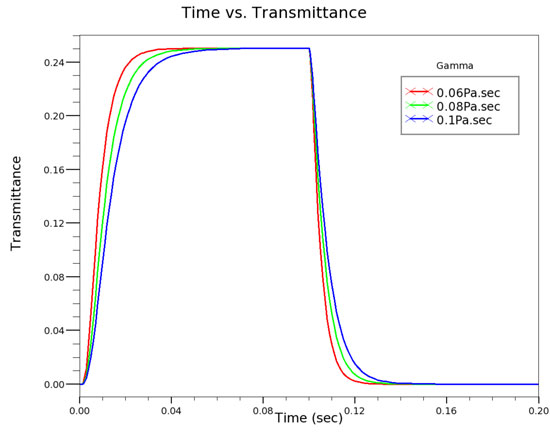
Dynamic Analysis of Liquid Crystal Pixels
We have demonstrated in previous articles the static electrical and optical simulation of LC cells [1][2]. The last piece of the function for a comprehensive analysis of an LC pixel is the capability of performing transient simulation. In this article, we will show the dynamic calculation of the LC director and the combination of electrical and optical simulation.

